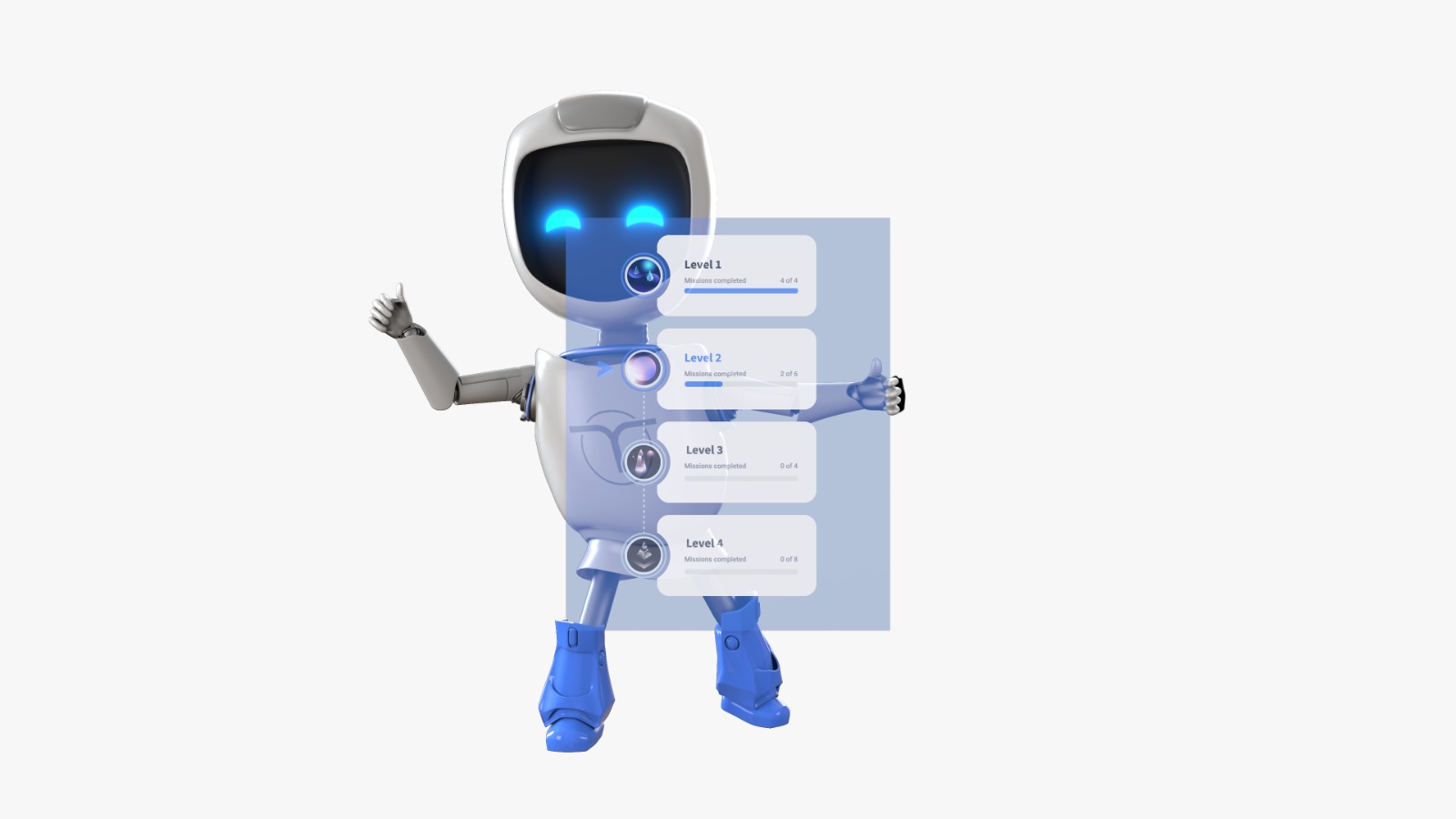Millennials and Gen Z, the two generations taking over the modern workforce have grown up consuming information at a higher frequency than their predecessors. Like their consumption of news, social media posts, and videos, their employee training programs need to be succinct, fast, and digestible.
Nothing defines microlearning better.
It’s about maximizing understanding within a few minutes that naturally fits into the daily workflow. It also fits into the natural flow of information consumption that Millennials and Gen Z have become used to in their daily lives.
Microlearning naturally fits into the lives of the modern employee and serves business well by imparting valuable knowledge. In fact, it’s also shown to be a great motivator according to contemporary research. Not only is it primed for effective training of Millennials and Gen Z, but it has a killer ROI.
Millennials and Gen Z Demand Microlearning
Millennials and Gen Z will soon replace the world’s workforce. This is the natural way of life. These are generations that have grown up consuming bite sized information on their smartphones. Whether it’s news, entertainment, or education, they’re accustomed to 30 second videos more than long presentations.
Microlearning is just an idea whose time has come in this case. It is not an option for companies to implement this in their L&D strategies, it is a necessity. It fits the age just as smartphones and tablets do. It’s a fast, effective, and direct way to boost your employees’ skills without needing to spend too much.
However, just incorporating microlearning into the system isn’t enough. It’s about catering to the needs and the communication patterns which Millennials and Gen Z have adopted. This is a generation which has grown up using tablets and smartphones, hence training programs for it have to be available on mobile devices.
Microlearning Serves the Need for Immediate Application
Employee training as it has been used for decades now has become inefficient and needs to adapt to current trends. McKinsey & Co. found that only 25% of their respondents said employee training benefitted their performance. This could very well be because of a change in demographics. Whether you say it’s because of decreasing attention spans or an addiction to social media, it doesn’t solve the problem.
Millennials and Gen Z are used to getting the answers to their questions within a few taps on their smartphones and tablets. It stands to reason that their interest can’t be held for very long using an antiquated training method. Microlearning is the exact opposite of antiquated training. It’s fast, effective, and fitted for the modern workforce. How?
Well for starters, with microlearning, employees can interact with training on a personal level. Through mobile apps and web apps, they can experience the training for themselves. Listening to one person in an auditorium drone on about the benefits of communication skills is tiresome. What’s more, its inefficient.
Today, training is more about immediate application rather than retention. This is in line with the thinking of both Millennials and Gen Z. They’re used to getting direct answers and split-second results. Hence, microlearning is perfect for skill acquisition which leads to upward mobility for the modern workforce. Microlearning is more personal, better fitted for digital learning, and more effective.
From our experience with our clients, we have seen engagement levels of over 90%, skill improvements up to 70% across various competencies and the dedicated time was optimized by up to 50%.
Microlearning Gamification: Guaranteeing Active Participation for the Modern Workforce
A very effective part of microlearning is also the gamification of the process. Not only does this increase interest, but also benefits skill retention as high as 40%. Several large companies are already using gamification as part of their training programs. Take for example:
Domino’s: They created the Pizza Maker Course for their employees to go through simulations. This pushed them to learn different scenarios and encouraged them to improve past scores. As a result, more employees mastered the menu faster, and made more accurate pizzas faster.
Deloitte: One of the Big Four, Deloitte came up with Leadership Academy course and introduced gamified elements like badges, status symbols, and leaderboards. The results were staggering. 3 Months after implementation, the average time to complete the program had dropped by 50%. There was also a 47% increase in the number of daily active users of the program.
Cisco: The company’s Global Social Media program was gamified by introducing 3 different levels of progression. Employees could graduate from Specialist to Strategist to Master. For other departments like HR, external communications, and sales, etc., further sub-certification levels were introduced. This resulted in the completion of tens of thousands of courses and several thousands of Cisco employees certified.
This isn’t surprising if you consider that the modern workforce has grown up with videogame and apps. Nearly everything is about tracking progress and completing small, bite-sized tasks. This isn’t just true with regards to gaming. It’s also true about getting enough reward points in your bank account, or completing enough frequent flyer miles.
With a goal in mind, it’s more exciting and motivating for people to go along with something they may even consider tedious. With microlearning and the gamification of training, you’ll be killing two birds with one stone.
First, the entire concept of gamification reinforces remembrance through association with fun. That’s the opposite of what office or employee training is considered to be. When human beings are having fun doing an activity, they form positive connections and clearer memories.
Second, with specific goals in front of the participants, they’ll know exactly what they’re aiming for. Also, gamification lets employees know just how well they did immediately. Whether they miss or earn points or fail an activity, they can see it right then and there.
Microlearning Enables Social Learning
Millennial and Gen Z culture isn’t just defined by getting the right answers in a short span of time. It’s also impacted by sharing snippets of information. This is another area where microlearning can facilitate and empower the modern workforce: social learning.
Microlearning is, by definition, classified into bite-sized, consumable bits of information. Microlearning training is distributed topic by topic instead of broad subjects. Hence, locating the files and sharing them isn’t a huge problem for employees.
They won’t have to wade through huge files to get at specific training. In turn, the modern workforce, which hates spending too much time on a single task, can efficiently access the required training. Micro assets are also very effective for peer learning. Employees can simply share it with their co-workers and it can be consumed in a few minutes.
As on social media, micro assets can be shared throughout a company’s online platform, making learning, a social process as well as a functional one. Colleagues or co-workers struggling with a problem can reach a solution very easily compared to searching for hours.
This doesn’t just seem easier, but more productive over many years for every single organization that employs it. It promotes a culture of sharing and quick information exchange which can compound many times over time.
Microlearning Acts as Updates for the Modern Workforce
All in all, microlearning sessions are somewhat analogous to the updates that the modern workforce is used to receiving. Whether you single out texts, app updates, or notifications, the modern workforce’s day consists of tiny updates. Microlearning fits that mold perfectly.
Microlearning also makes imparting skills to employees more efficient in general.
Seminars for all their praise couldn’t solve the problem of imparting skills to new employees in its entirety. What if a seminar just happened and an employee joined the next day? What if an employee couldn’t attend a seminar due to sickness, or a prior commitment, or whatever? Handing that employee, a packet or a handbook would never solve that problem. This is more in line with asynchronous or just in time training.
However, sending an update via a small learning journey which can be consumed in 5-7 minutes per day is digestible, and palatable. Gen Z and Millennials receive small messages on their mobile device multiple times a day. Their adaptation to the microlearning format should be next to seamless.
Take Your L&D Strategy to the Next Level with Code of Talent
Microlearning is the future of training the modern workforce to fit a company’s needs and grow its skillset. Yet, you need the right tools and the right platform to effectively impart that training.
And that’s what Code of Talent does! We recognize your organization’s needs give you the right microlearning platform for your workforce.





